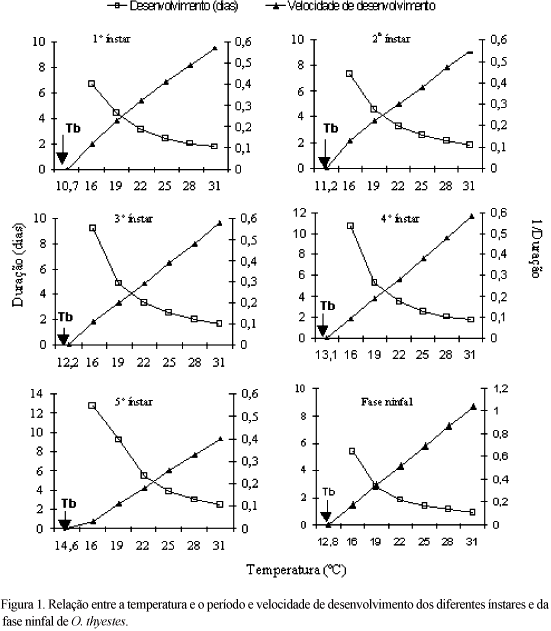Temperature and food play an important part in the development time and adult activities of Orius species, and these biological parameters are important for purpose of mass rearing of natural enemies for use on biological control programs. The objective of this research was to evaluate the influence of different temperatures on nymphal development of Orius thyestes Herring when fed with Anagasta kuehniella (Zeller) eggs in climatic chambers at 16, 19, 22, 25, 28 and 31 ± 1°C, 70 ± 10% RH and 12h photophase. The thermal requirements and nymphal consumption were also determined. O. thyestes presented five instars. The nymphal period was about six times shorter at 31°C (9.8 days) than at 16°C (58.2 days). Nymph survival was lowest at 16°C, with only 40% of the nymphs reaching adult stage. The higher nymph survival were found at 22°C (96.4%), 25°C (94.5%) and 28ºC (100%). Each nymph of O. thyestes consumed 39.4 eggs of A. kuehniella. The lower temperature threshold and thermal constant for the nymphal development of O. thyestes were 12.8°C and 173.82 day-degrees, respectively. The interval from 22°C to 28°C is more suitable for nymphal development of O. thyestes. O. thyestes finds probably better chance for colonization and establishment in tropical and subtropical regions.
Temperature; predator; biological control



